
Warren Price/iStock/Getty Images
Canning venison is an economical way to preserve your meat for up to one year. You can preserve venison by one of two methods: hot packing or cold packing. Hot packing means you cook the meat before caning; with cold packing, you can the meat uncooked. In both cases, you must use a pressure canner to preserve the meat, because meat has a low acid content. Foods with low acid content are safe to eat only if you use a pressure canner to preserve them.
Prepping the Jars
The entire process of canning requires scrupulous attention to cleanliness. Even though canning using a pressure canner heats food to 240 degrees Fahrenheit, cleaning canning jars thoroughly before putting meat in them helps reduce the risk of bacterial contamination. Wash your jars in hot soapy water and rinse thoroughly or clean them in the dishwasher. Keep the jars hot until you're ready to fill them by placing them in simmering water in a large saucepan or stockpot until just before you fill them. Fill the saucepan with enough water to cover the jars. Keep the lids in a separate saucepan filled with enough simmering water to cover the lids until just before you are ready to use them.
Hot Packing
Before cooking your meat for hot packing, cut off all the fat. Cube the meat into small squares or strips. Brown the meat in a frying pan with a small amount of fat just until it's rare. Spoon the meat into canning jars. Add the juice from the cooked meat to the jar to 1 inch below the top of the jar. If you don't have enough juice, add boiling water or tomato juice. Divide the available juice evenly between your jars. Add 1 teaspoon of salt per quart jar for taste, if desired. Hot packing allows you to fit more meat in the jars and results in less liquid loss, which might result in better quality meat, explains Margie Memmott et al. in the Utah University Extension Cooperative publication "Preserve the Harvest." Hot packing also removes air from the jars that can affect quality. Remove any bubbles by pushing against the side of the jar with a spatula. Wipe any spills off the jars. After filling, place the lids on top of the jars. Put the metal rings over the tops and tighten.
Cold Packing
To cold pack venison, cut off the fat and cube the meat as you would for hot packing. Spoon the meat into the cleaned canning jars, leaving 1 inch of headspace between the top of the meat and the top of the jar. Leaving this space allows for expansion of the food during storage and for a tight vacuum seal to form. Add 2 teaspoons of salt for taste, if desired. Cold packing is faster than hot packing, but can result in darkening of the meat during storage. Clean the outside of the jar to remove any spills. Place the lids on top of the jars and tighten the metal rings.
Canning Procedure
You must use a pressure cooker to safely can meat, regardless of whether you use the hot pack or cold pack method. Fill the pressure cooker with 2 to 3 inches of water, then place the jar rack containing the filled jars inside. Vent the pressure cooker for 10 minutes before starting the cooking process to remove air, which can lower the temperature inside the pressure cooker. This could allow bacteria to survive the process. Open the vent pipe and place the pressure cooker on the stove. Heat the water to boiling; when steam comes out of the vent pipe, set your timer for 10 minutes. At the end of 10 minutes, place the weighted gauge or counterweight over the vent pipe and set your timer for the required processing time.
Settings
For weighted pressure-gauge canners, set the pressure at 10 pounds if you live below 1,000 feet and at 15 pounds if you live above 1,000 feet. For a dial gauge, set it at 11 pounds for altitudes of 0 to 2,000 feet, at 12 pounds for altitudes of 2,000 to 4,000 feet, 13 pounds for 4,000 to 6,000 feet and at 14 pounds for altitudes of 6,000 to 8,000 feet. Pint jars must be pressure cooked for 75 minutes and quart jars for 90 minutes to kill all bacteria.
Storage
Remove the canner from the heat. Remove jars from the canner once the pressure drops to zero and leave at room temperature for 12 to 24 hours. Check the lids for a tight seal and remove the metal bands. Place the jars in a dark, dry area with temperatures between 50 and 70 degrees Fahrenheit for best quality; keep temperatures below 95 degree Fahrenheit to avoid bacterial growth, the United States Department of Agriculture recommends. Dating your jars makes it easier to keep track of when to use them; use canned venison within one year after canning.
Related Articles

How to Can Pork Tenderloin in Half Pint ...
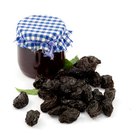
How to Can Jelly Using a Pressure Canner

How to Marinate Meat With a FoodSaver
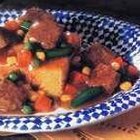
How to Can Homemade Vegetable Beef Soup

How to Process & Seal Hot Sauce Bottles

How to Preserve Sauerkraut
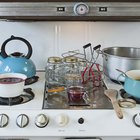
How to Can Beef Meat With a Pressure ...
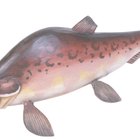
How to Pressure Can Trout

How to Preserve Pimentos

How to Vacuum Seal Jars

How to Can With Half-Pint Jars
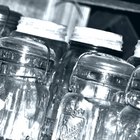
How to Can Fish in a Pressure Canner
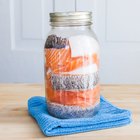
How to Can Salmon Fish
How to Heat Process Mason Jars to Seal

How to Use Citric Acid in Canning

How to Put Together a Cuisinart Blender
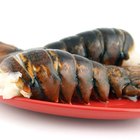
Step-by-Step Instructions for Boiling ...

Instructions for Canning With a ...

Why Do Canning Jars Pop While Cooling?

How to Cook Barbecue Deer in the Slow ...
References
Writer Bio
A registered nurse with more than 25 years of experience in oncology, labor/delivery, neonatal intensive care, infertility and ophthalmology, Sharon Perkins has also coauthored and edited numerous health books for the Wiley "Dummies" series. Perkins also has extensive experience working in home health with medically fragile pediatric patients.
Photo Credits
Warren Price/iStock/Getty Images